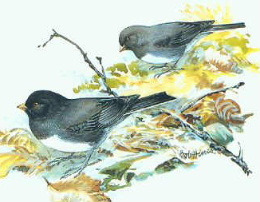 I am trying to give the boys a commitment to conservation. We were challenged recently by a fellow birder that it is not enough to just enjoy counting birds….you need to really love the birds, in and of themselves, not just for the sake of identifying them. It is clear the boys already have this love. They enjoy watching even birds which they are familiar with, rather than only seeking for the next new find as some birders do.
I am trying to give the boys a commitment to conservation. We were challenged recently by a fellow birder that it is not enough to just enjoy counting birds….you need to really love the birds, in and of themselves, not just for the sake of identifying them. It is clear the boys already have this love. They enjoy watching even birds which they are familiar with, rather than only seeking for the next new find as some birders do.
Nevertheless, part of enjoying and loving birds is a commitment to conservation, and I think it is valuable to impart that desire to them now, while they are young.
We are doing several things to promote an interest in conservation.
For one thing, we have started recycling. It is a pain as there is no curbside pickup here, and we have to deliver it all to containers in our community. It is worth it, though. The boys feel great about doing their part in this small way. We have all been stunned at how quickly it adds up. I had no idea that we were generating so much garbage. I shudder to think of all the years we were just throwing things away, adding to landfills. I am confident we will never stop recycling now, in spite of the hassle.
We have also been reading our publications from the American Bird Conservancy about what they are doing with the money they receive. The boys raised over $500 for the ABC in the Youth Birding Competition, and it is fun to read what that money is being used for.
Today we read about habitats being endangered as shade coffee plantations are razed to make room for more lucrative sun plantations. This hits home, as I am a big coffee drinker. As much as depends on me, I’d like to buy only fair trade, shade grown coffee. My husband is not as committed to this as I am, due to the additional expense. Nevertheless, I think it is important, and I am looking online for a reasonable distributor of shade grown coffee.
We also read about practices which are endangering breeding and migration habitats, a new court ruling to protect birds from crashing into high communication towers along the coast, and an article about all of the dangers migrating birds face on their twice yearly trek. Articles like these are important for the boys to hear, and increase their commitment to conservation and their compassion for our feathered friends.
The boys are participating in citizen science projects like Celebrate Urban Birds. This is a 15 minute project which can be done as many times as you like. They go outside and view birds for about 10 minutes, recording exactly what they see. Then they come in and post their findings online, including the size of location where they did their viewing, habitat info (was there pavement, trees, etc.), and a tally of what they saw. There is a checklist of the birds that are most indicative of how populations are doing, and they check off which ones they saw. At the bottom there is a blank space to add any other interesting sightings. After they enter this information, they can view a google map which shows where other participants live, and they can click on the map to find what species are being spotted in those areas.
Celebrate Urban birds will even send you a free kit to get you started, which includes two posters and some bird seed.
Finally, we are planting a bird garden. This is giving us lots of opportunity to talk about conservation and preservation of habitat while we work together on our project. It also gives the boys a vision for what can be done and a sense of ownership. Habitat preservation depends on all of us, and even a child can help. I trust that this small project will bear fruit for a lifetime, for the birds and for us.
